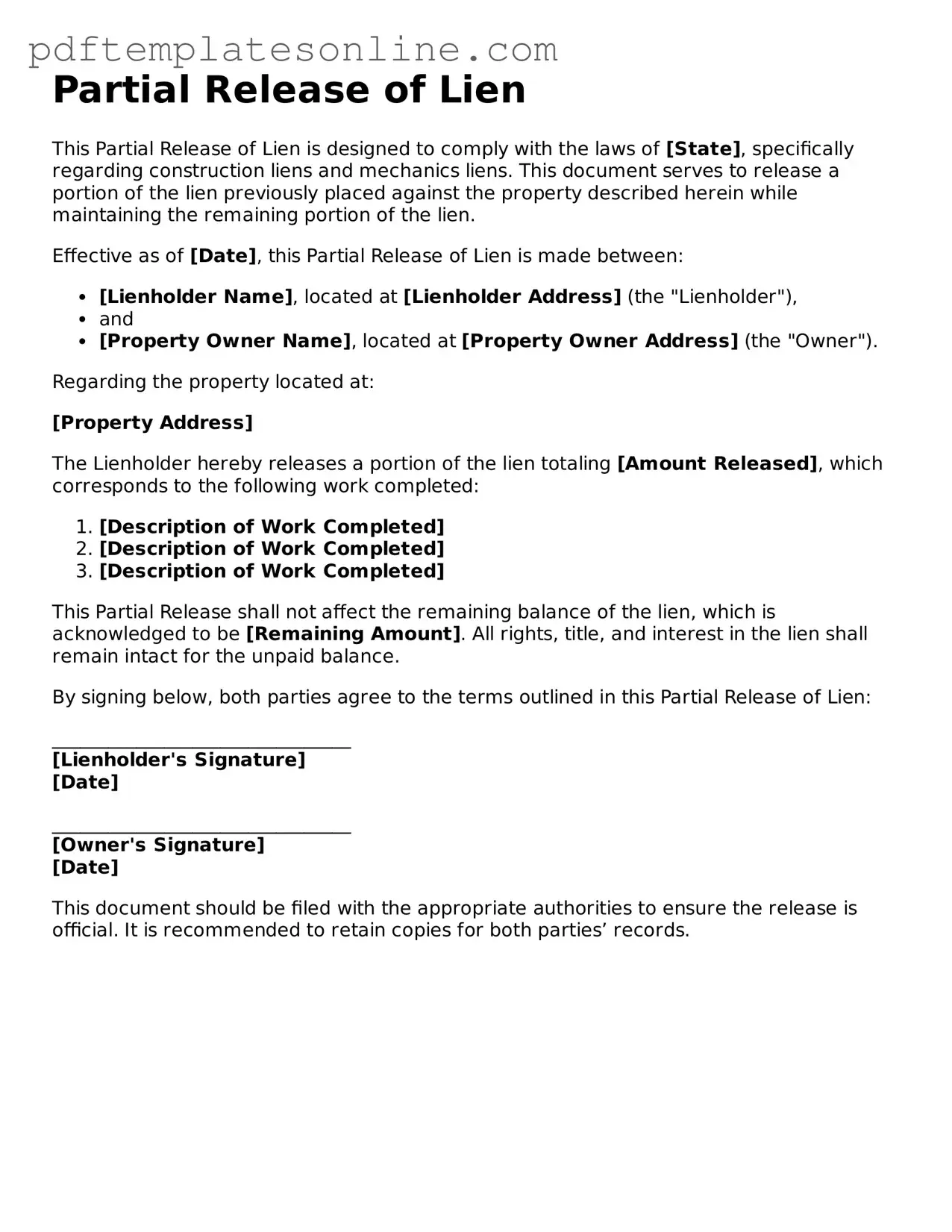Detailed Guide for Writing Partial Release of Lien
After you have gathered the necessary information, you are ready to complete the Partial Release of Lien form. This form is crucial for documenting the release of a lien on a property, which can be essential in various real estate transactions. Follow these steps to ensure the form is filled out correctly.
- Identify the Parties: Start by entering the names and addresses of both the lien claimant and the property owner. Make sure the information is accurate to avoid any confusion later.
- Property Description: Provide a clear description of the property involved. This may include the address, parcel number, or any other identifying details.
- Amount of Lien Released: Specify the amount of the lien that is being released. If it’s a partial release, indicate the exact dollar amount that is no longer encumbered by the lien.
- Date of Release: Write the date on which the partial release is being executed. This is important for record-keeping purposes.
- Signature: Ensure that the lien claimant signs the form. If there are multiple claimants, all must sign. Include printed names beneath the signatures for clarity.
- Notarization: Have the form notarized to validate the signatures. This step is often required to ensure the document is legally binding.
- Record the Document: Once completed, file the form with the appropriate local government office, such as the county clerk or recorder’s office. This step is crucial to make the release official.
Once you have completed these steps, you can move forward with your real estate transaction or other related processes, knowing that the lien has been properly released. Keeping a copy of the completed form for your records is always a good practice.
